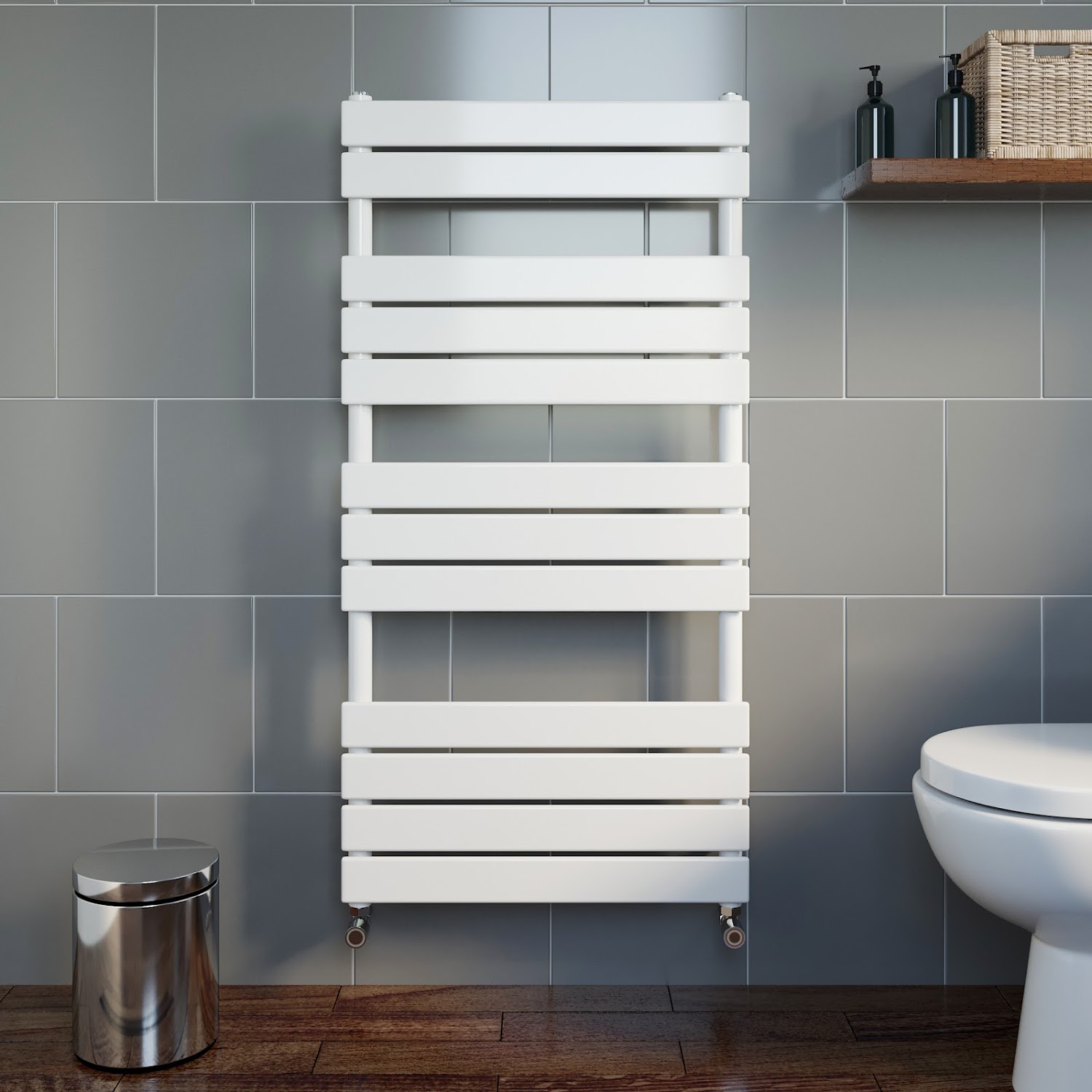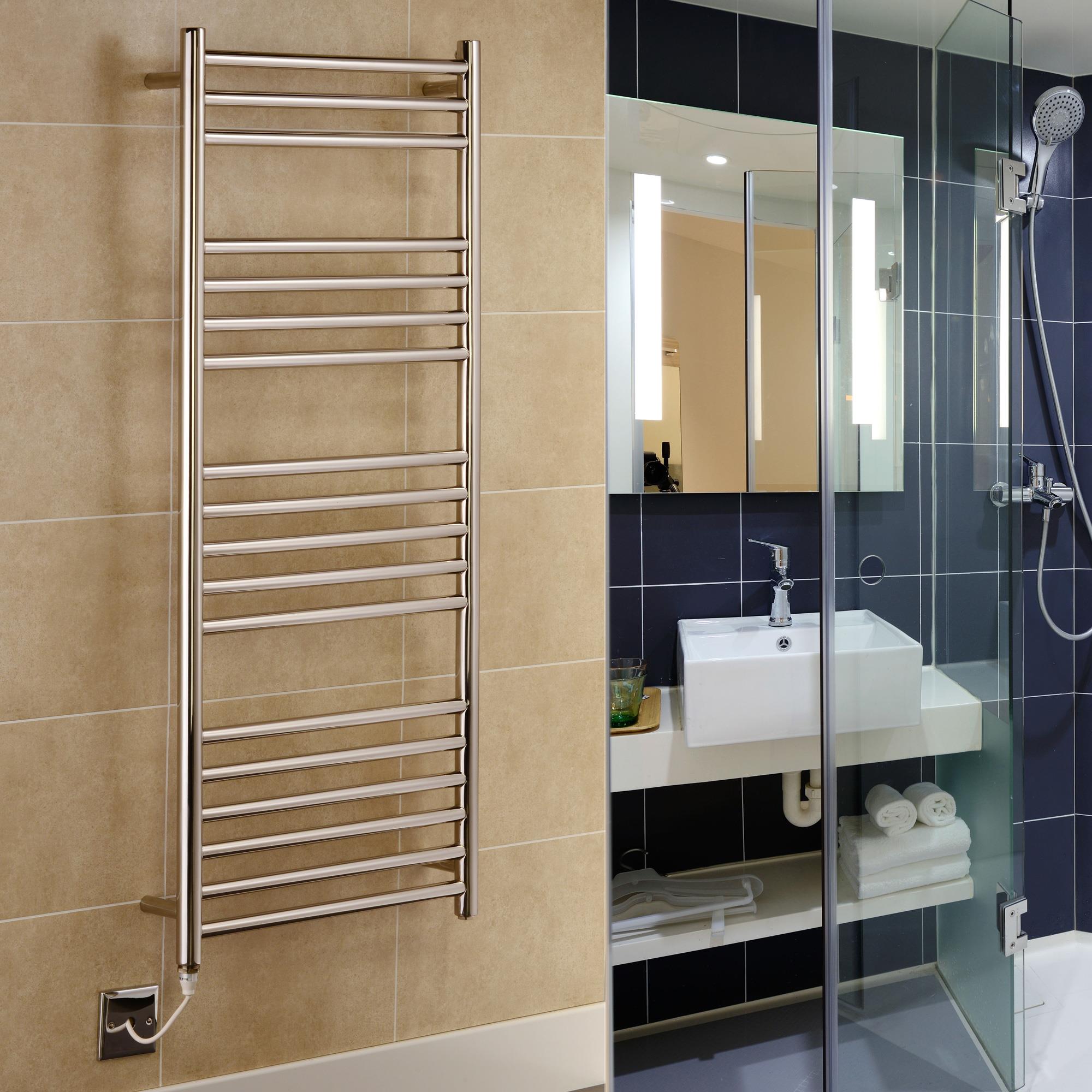Choosing the Right Electric Towel Rail

An electric towel rail is a fantastic addition to any bathroom, providing warmth and comfort. But with so many options available, choosing the right one can feel overwhelming. This guide will help you navigate the process, considering factors like size, type, and material to find the perfect fit for your needs.
Determining the Right Size
The size of your electric towel rail should be proportionate to your bathroom and the amount of towels you need to dry. A small bathroom might be best suited for a compact rail, while a larger bathroom could accommodate a larger, multi-bar rail. Consider the number of towels you typically use, and choose a rail with enough space to accommodate them comfortably.
Types of Electric Towel Rails
Electric towel rails come in various styles and features, each offering unique advantages. Here’s a breakdown of the most common types:
- Standard Towel Rails: These are the most basic type, consisting of a single or multiple bars designed for hanging towels. They are typically the most affordable option and are ideal for smaller bathrooms or those who only need to dry a few towels.
- Heated Shelves: Some electric towel rails feature integrated shelves that provide additional drying space. These shelves are ideal for storing smaller items like washcloths, hand towels, or even toiletries. They can also be used as a convenient surface for placing items like soaps or shampoos.
- Integrated Mirrors: Electric towel rails with integrated mirrors offer a practical and space-saving solution. They combine the functionality of a towel warmer with a mirror, eliminating the need for separate fixtures. These are particularly useful in smaller bathrooms where space is limited.
- Towel Warming Function: Some electric towel rails feature a towel warming function that allows you to pre-heat your towels for a luxurious and cozy experience. This feature is particularly useful in colder climates or for those who prefer warm towels after a shower.
Comparing Electric Towel Rail Materials
Electric towel rails are available in a variety of materials, each with its own advantages and disadvantages. The following table provides a comparison of the most popular options:
| Material | Pros | Cons |
|---|---|---|
| Stainless Steel | Durable, corrosion-resistant, easy to clean, modern aesthetic | Can be more expensive than other options |
| Chrome | Shiny, reflective finish, adds a touch of elegance, affordable | Less durable than stainless steel, prone to scratches |
| Brushed Nickel | Matte finish, hides fingerprints, durable, stylish | Can be more expensive than chrome |
Installation and Maintenance: Electric Bathroom Towel Rail

Installing an electric towel rail is a relatively straightforward process, but it does require some electrical knowledge and safety precautions. Regular maintenance ensures the towel rail operates efficiently and safely, extending its lifespan.
Installation Process
Installing an electric towel rail involves a few key steps:
- Choose the Right Location: Select a suitable location near a power outlet and a plumbing connection, ensuring adequate space for the towel rail and easy access for maintenance.
- Prepare the Wall: Mark the desired location on the wall, ensuring it is a solid surface capable of supporting the weight of the towel rail. Use a stud finder to locate wall studs for added stability.
- Electrical Wiring: Connect the towel rail to a dedicated electrical circuit using appropriate wiring and a suitable fuse. Ensure the electrical connection is properly insulated and meets local electrical codes.
- Mounting the Rail: Secure the towel rail to the wall using the provided mounting brackets and screws. Ensure the towel rail is level and securely mounted.
- Connect the Plumbing (If Applicable): If the towel rail includes a water connection, ensure the plumbing is properly installed and connected to the water supply. Test the water connection for leaks before using the towel rail.
- Final Checks: Test the electrical connection and ensure the towel rail is functioning properly. Check for leaks if there is a water connection.
Safety Precautions
Safety is paramount during installation and maintenance. Follow these precautions:
- Turn Off Power: Always disconnect the power supply to the towel rail before working on it. Use a voltage tester to confirm the power is off.
- Use Insulated Tools: Utilize insulated tools and gloves when working with electrical components to prevent electric shock.
- Proper Grounding: Ensure the towel rail is properly grounded to prevent electrical hazards.
- Avoid Water Contact: Do not allow water to come into contact with electrical components. If water spills on the towel rail, disconnect the power supply immediately.
- Professional Installation: If you are not comfortable with electrical work, consult a qualified electrician for professional installation.
Maintenance Practices
Regular maintenance is essential to keep the towel rail in optimal condition:
- Cleaning: Clean the towel rail regularly with a soft cloth and mild detergent. Avoid abrasive cleaners or harsh chemicals that could damage the finish.
- Inspect for Damage: Regularly inspect the towel rail for any signs of damage, such as cracks, loose connections, or corrosion. Address any issues promptly to prevent further damage.
- Check Thermostat: Ensure the thermostat is functioning correctly and the towel rail is heating to the desired temperature.
- Descaling: If the towel rail has a water connection, descale it periodically to remove mineral deposits that can affect its efficiency.
- Professional Service: For more complex maintenance or repairs, consult a qualified technician.
Infographic Illustration, Electric bathroom towel rail
Image Description:
The infographic is a simple visual representation of the key steps in installing an electric towel rail. It features a series of icons representing each step, with accompanying text descriptions. The infographic highlights potential hazards, such as electrical shock and water leaks, with warning symbols. Safety measures, such as turning off the power and using insulated tools, are emphasized with green checkmarks. The infographic concludes with a reminder to consult a qualified electrician for professional installation if necessary.
